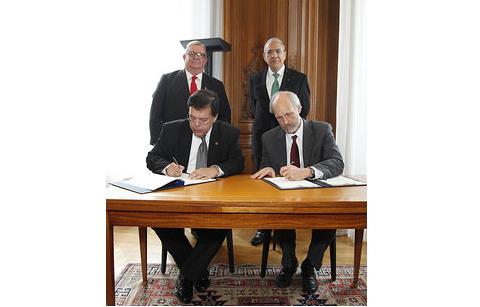Threat or Opportunity? Advisors Split on the Impact of Robo-Advisors
| By Fórmate a Fondo | 0 Comentarios
According to The Third Annual Study of Advisory Success: Confidence and Concern in the New Digital Age, released this week at Pershing’s INSITE™ 2015 conference, advisors are fairly evenly divided between viewing digital advisors, also known as robo-advisors, as competition or irrelevant to their business. Perhaps most surprising in the research was that only 19 percent of advisors think digital advice can complement their practice.
“There is no question that digital platforms are transforming the industry,” says Ben Harrison, head of business development and relationship management at Pershing Advisor Solutions. “Though most advisors are familiar with digital advice, a relatively small percentage of advisors are currently using this technology. The biggest opportunity we see for transformation is for advisors to automate low-value tasks, expand their reach and profitability.”
The survey also found that just over a quarter of advisors surveyed (27 percent) believe digital advice is irrelevant to their practice; while nearly another quarter (23 percent) feel that digital advice represents competition. By means of comparison, one-third (33 percent) of the advisors ages 18-34 consider digital advice to be competition, and only nine percent think they can complement their business. Comparatively, 27 percent of advisors between the ages of 35-54 view digital advice as competition, while only 16 percent of advisors over the age of 55 view them as competition
In general, price was cited by respondents as one of the most threatening factors of digital online financial providers. More than three quarters of advisors surveyed say the low cost of digital advice will pose some sort of threat to their practice. This data is underscored by the finding of a different study that found more than half of investors surveyed agreed that the investment advice most financial advisors offer is not worth the one percent fee.
“It is short-sighted to limit the ways technology can complement a business to only digital advice,” said Kim Dellarocca, managing director at Pershing. “Digital advice is important, but it is only one area where a firm needs to evolve their technology strategy to deliver a wealth management experience that mirrors the expectations of today’s consumers and workforce.”
The study suggests action steps for advisors to transform digital innovations into drivers of positive change and business growth, including:
- Plan your approach to technology adoption. Advisors should understand where they sit on the digital spectrum and create a plan for where they want to be. Most begin by automating repetitive or low-value- tasks in their business. Once implemented, only then should they systematically work towards adopting increasingly sophisticated tools.
- Make high-touch practices even more efficientand more personal. Digital tools, like those that automate client communications can help preserve the “high touch” experience many advisors are known for, but in a more efficient and more personal way that is customized to clients’ specific interests.
- Improve your profitability and technology appeal. By automating key tasks that support the delivery of wealth management services, advisors can increase their margins and productivity. Advisors can use that gained time and resources to focus on higher valued activities like service delivery and more in-depth financial planning. Infusing technology into your business with greater self-service tools and more automation, not only adds to profitability, but creates a more modern feeling for client communications and interactions that today’s tech savvy investors crave.
- Articulate your value. As investors and advisors both respond to digital advice trends, it is more important than ever for advisors to educate their clients about the work they do on their behalf– and the distinct value and wisdom the advisor offers in relationship to the fees they charge.
- Be realistic about focus of the practice. If advisors have an appetite for tech-enabled growth, they should invest time and money in the latest capabilities. If not, their focus should shift towards financial planning or serving wealthy or hands-off investors.





